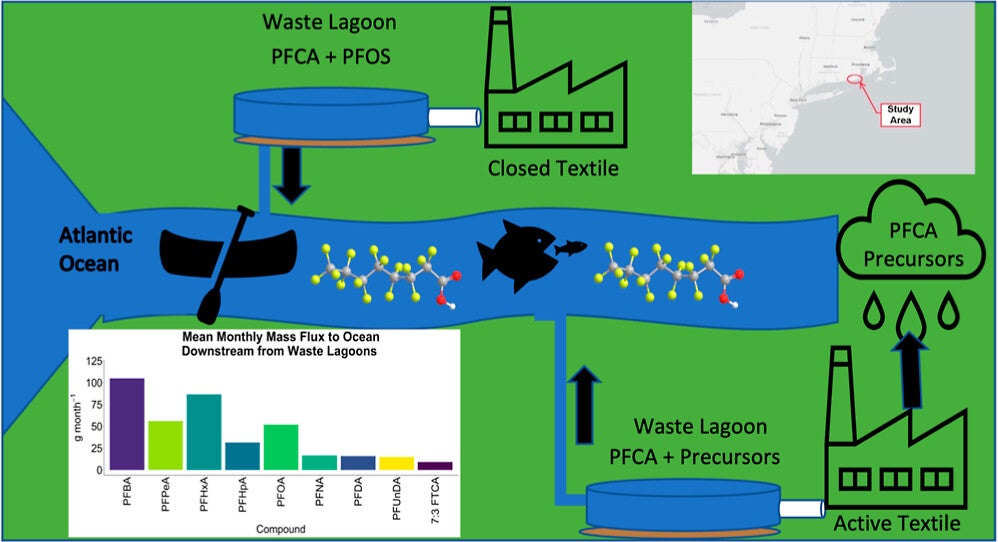When it comes to rivers, we usually think of the Hudson River in New York, or the Delaware River that George Washington famously crossed. So, when we think of pollution in rivers, we often think of big rivers running through big cities. However, the East Coast of the US is littered with smaller local rivers, many of which were vital to the local economies when New England was known for its mill towns, textiles, and industry.
While textiles have long been known to use PFAS in the scientific community, the public connection between the two has been less obvious. Even more so considering that textile mills along rivers go back far longer in history than PFAS. However, a recent study by STEEP researchers suggests that both closed and still active textile mills along a small river in Rhode Island may be a large source of PFAS to the Atlantic Ocean.
URI and Harvard scientists teamed up with the Rhode Island Department of Environmental Management to explore the impact of textile mills on the Pawcatuck River, located in the southeast corner of the state along the Connecticut border. This study was published in 2023 and used monthly deployments of to measure average PFAS concentrations at seven sites. These sites ranged from very low PFAS concentrations at Worden Pond, which feeds the river, to elevated concentrations at sites downstream of active mills and waste lagoons for mills shuttered years ago.
The study found that PFAS contributions from the river to the Atlantic Ocean increased more than 700% after the waste lagoon inputs to river. These waste lagoons hold PFAS waste from closed or inactive textile mills and meet the river at various points where they slowly leach. The study’s samples from these waste lagoons showed concentrations over 300% higher than that of the Pawcatuck River.
Overall, this study exhibited that hundreds of grams of PFAS were reaching the Atlantic Ocean just from the small Pawcatuck River alone. This underscores the importance of examining other surface and groundwaters impacted by nearby textile and industrial activity, even when nearby water bodies are considered small or too local to warrant major studies. Remediation of these waste lagoons and others like them will be vital to limiting PFAS export from textile mills to coastal Rhode Island waters. 
Dunn, M., Noons, N., Vojta, S., Becanova, J., Pickard, H., Sunderland, E.M., & Lohmann, R. Unregulated Active and Closed Textile Mills Represent a Significant Vector of PFAS Contamination into Coastal Rivers. ACS ES&T Water 2024 4 (1), 114-124. [DOI: 10.1021/acsestwater.3c00439]

